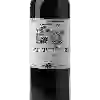
Winery DupeubleChardonnay Brut
This wine generally goes well with pork, vegetarian or poultry.
Food and wine pairings with Chardonnay Brut
Pairings that work perfectly with Chardonnay Brut
Original food and wine pairings with Chardonnay Brut
The Chardonnay Brut of Winery Dupeuble matches generally quite well with dishes of pork, rich fish (salmon, tuna etc) or vegetarian such as recipes of meatloaf with lovage (perpetual celery), pumpkin and tuna gratin or spinach and goat cheese quiche.
Details and technical informations about Winery Dupeuble's Chardonnay Brut.
Discover the grape variety: Chardonnay
The white Chardonnay is a grape variety that originated in France (Burgundy). It produces a variety of grape specially used for wine making. It is rare to find this grape to eat on our tables. This variety of grape is characterized by small bunches, and small grapes. White Chardonnay can be found in many vineyards: South West, Burgundy, Jura, Languedoc & Roussillon, Cognac, Bordeaux, Beaujolais, Savoie & Bugey, Loire Valley, Champagne, Rhone Valley, Armagnac, Lorraine, Alsace, Provence & Corsica.
Informations about the Winery Dupeuble
The Winery Dupeuble is one of of the world's greatest estates. It offers 13 wines for sale in the of Beaujolais to come and discover on site or to buy online.
The wine region of Beaujolais
Beaujolais is an important wine region in eastern France, famous for its vibrant, Fruity red wines made from Gamay. It is located immediately South of Burgundy, of which it is sometimes considered a Part, although it is in the administrative region of Rhône. The extensive plantings of Gamay in this region make Beaujolais one of the few regions in the world that is so concentrated on a single Grape variety. Pinot Noir is used in small quantities in red and rosé wines, but in the name of regional identity, it is being phased out and will only be allowed until the 2015 harvest.
The word of the wine: Acidic (flavor)
Acidity is present in all wines, and is essential in white wines. It is due to the presence of different organic acids in the wine, and is expressed in the mouth by a sensation of freshness combined with other elements, such as minerality or a note of bitterness. Moderately present, it brings relief and vivacity to the wine.














